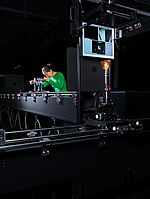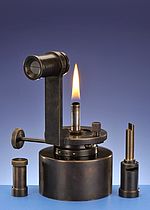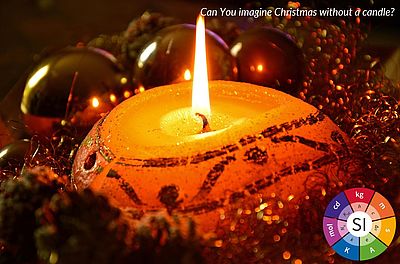Please type a search term (at least two characters)
The unit of the month December 2018: Candela

No, we did not forget to insert the picture. What you see here is a typical view of the inside of a photometry laboratory, just before the measurement starts. Perhaps you can see the weak glow of the LED of a measurement device in the lower left corner. The start of a measurement will bring light to this darkness, as laboratories like this are the metrological home of the "unit of the month" for December - the candela, the SI unit of luminous intensity.
Inside such laboratories, the properties of light irradiated from objects, like bulbs, are measured. As only the light which is directly sent out by the light source should be measured, any other reflected light is unwanted - and considered to be 'photon pollution'. This is why the walls, ceiling, floor, and boards are covered in photometry-friendly, light-absorbing black.

Even though the rooms are designed to be as dark as possible, the people working there don't resemble the cliché of shade-loving, obsessive, zany scientists. They don't prance around their apparatuses and call out loud "It's alive!" as soon as the light turns on. Instead, they carefully follow very precise specifications and guidelines to measure the candela. And just as for any other of the seven SI base units, there is an official definition which they work from:
The candela is the luminous intensity, in a given direction, of a source that emits monochromatic radiation of frequency 540 x 1012 hertz and that has a radiant intensity in that direction of 1/683 watt per steradian.
However, so that scientists can continue to improve their measurements and make them as accurate as possible, from 20 May 2019, there will be a new official definition:
The candela, symbol cd, is the SI unit of luminous intensity in a given direction. It is defined by taking the fixed numerical value of the luminous efficacy of monochromatic radiation of frequency 540 × 1012 Hz, Kcd, to be 683 when expressed in the unit lm W−1, which is equal to cd sr W−1, or cd sr kg−1 m−2 s3, where the kilogram, metre and second are defined in terms of h, c and ΔνCs.

The definitions may not look alike at first, but just like the meter, our unit of the month November, there is actually no change for the candela when it comes to the physical concepts behind the definition. What will be different from next year is that the constant of luminous efficacy will be the basis of the definition, and its value in combination with the given units will state how "intense" one candela is.
By the way - it is not a coincidence that "candela" sounds like "candle". It is, in fact, the Latin word for candle. In 1948, during the 9th International Conference on Weights and Measures, the candela was defined as the international unit for luminous intensity. Before that, there were different standards and units for the luminous intensity around the world. In Germany and Austria for example, the unit "Hefnerkerze" (short: HK) was used. One Hefnerkerze was the luminous intensity irradiated by a special type of candle (see picture) and was approximately 0.9 Candela.
So next time you light a candle - which might be quite soon at this time of the year - you will have a quite good idea of how intense one candela is.
Christmas and fairy lights

A little story from our colleagues in the United Kingdom:
On 25 November 1882, Gilbert and Sullivan's Opera Iolanthe opened in London's Savoy Theatre, and inadvertently started a Christmas tradition we still observe today.
In a theatre first, the Swan United Electric Light Company was commissioned to create miniature lights which twinkled from wreaths worn by the lead fairies. In an age when electric lighting was still cutting edge, the tiny lights - powered by battery packs hidden in costumes - amazed audiences. The term 'fairy lights' was born.
A year later Edward Johnson, a colleague of Thomas Edison, put fairy lights on a Christmas tree for the first time.
Fairy lights are also a good way of visualising the candela. The light from a single clear indoor fairy light is approximately one candela. Both traditional tungsten filament fairy lamps and modern LED versions have similar luminous intensity, despite LEDs consuming a tenth of the electricity.
